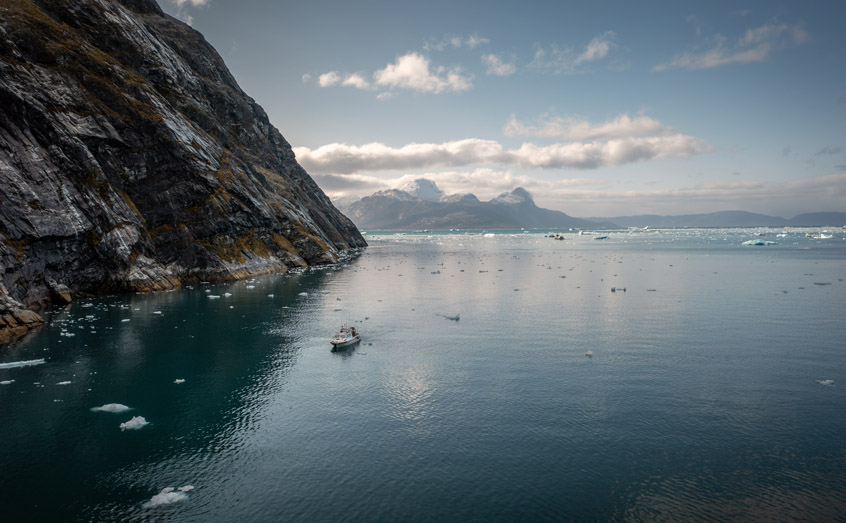SAMS news room
‘Virtual marine biologist’ reveals Greenland sealife

SAMS scientists in collaboration with colleagues from the Greenland Climate Research Centre (GCRC) have used robotics and artificial intelligence (AI) to study organisms on deep Greenlandic fjords-walls for the first time.
The team conducted 18 subsea video surveys to depths of 120 metres across the length of the fjord Nuup Kangerlua, near to the Greenlandic capital Nuuk.
Working with the GCRC and the NERC Arctic Office, they used the video footage to create 3D models and then applied a trained AI system, a ‘virtual marine biologist’, to identify and accurately measure the various organisms present.
Their findings will help to create and inform assessments of ecosystem composition and functioning in this hard-to-reach environment, giving an insight into how climate change may be affecting marine life there.
SAMS marine biologist Joe Marlow, part of the collaborative fieldwork team, said: “We know a lot about the seabed at the bottom of fjords, because it's generally flat and soft, so it’s easy to use methods like video sledges and drop cameras.
“However, we know very little about the steep sides of fjords beyond SCUBA depth. As remotely operated vehicles (ROVs) have become better, smaller and cheaper, they have allowed us to fill that gap.”
Creating 3D images by deploying two cameras at once, the team can more accurately assess volume, surface area and texture, compared with 2D images. Once the AI programme automatically identifies the species, the scientists can quickly isolate them from the 3D model and work out their volume or surface area per given area. These are particularly useful measurements, as they can help to calculate biomass or carbon content, which the team hopes to do in the future.
Dr Marlow added: “Having proved the use of our technology in the field, we are keen to use it to gain a greater understanding of fjord-wall ecology. Information on biomass can tell us a lot about the functioning of the ecosystem, and our Greenlandic partners are particularly interested in measuring carbon content in fjord-wall taxa. It is thought that fjords have a potential role in blue carbon storage, and the removal or decline of the glaciers because of climate change could mean more substrate on which carbon-storing animals and plants can grow.”
The fieldwork was funded by a UKRI-NERC Greenland small bursary.
